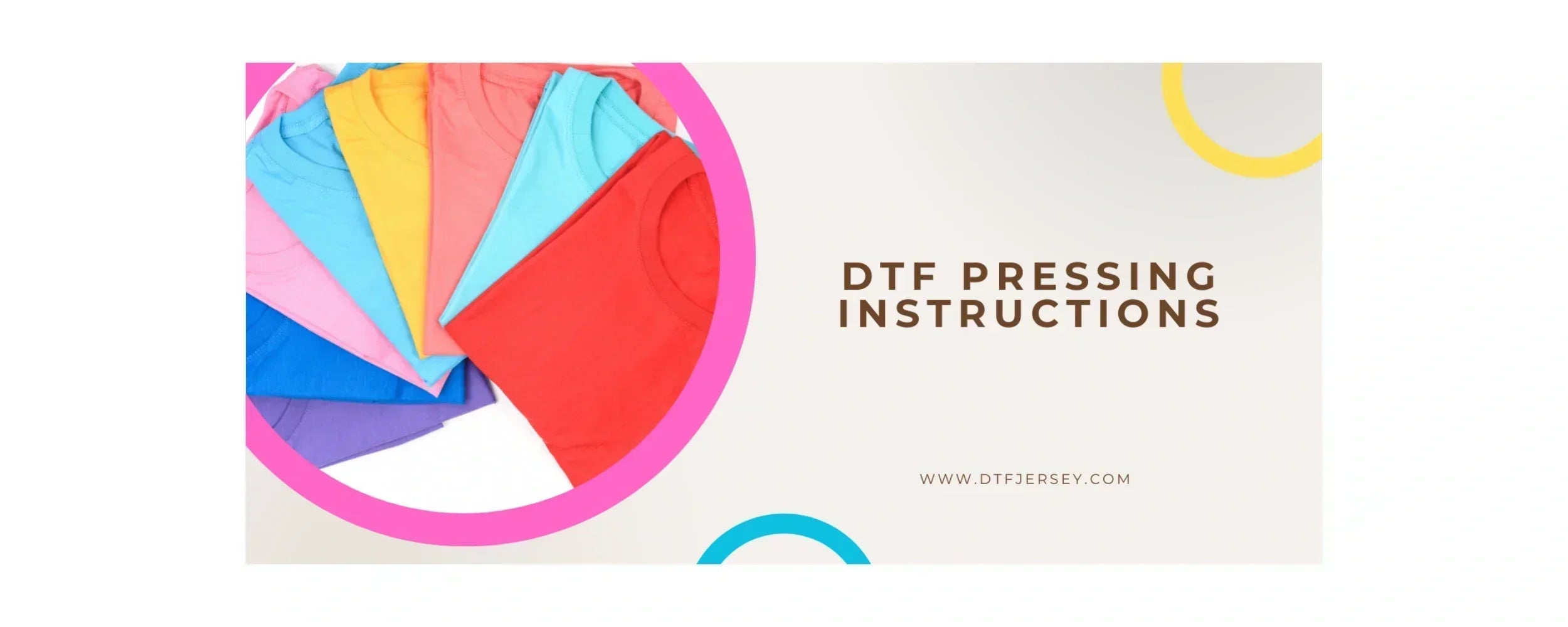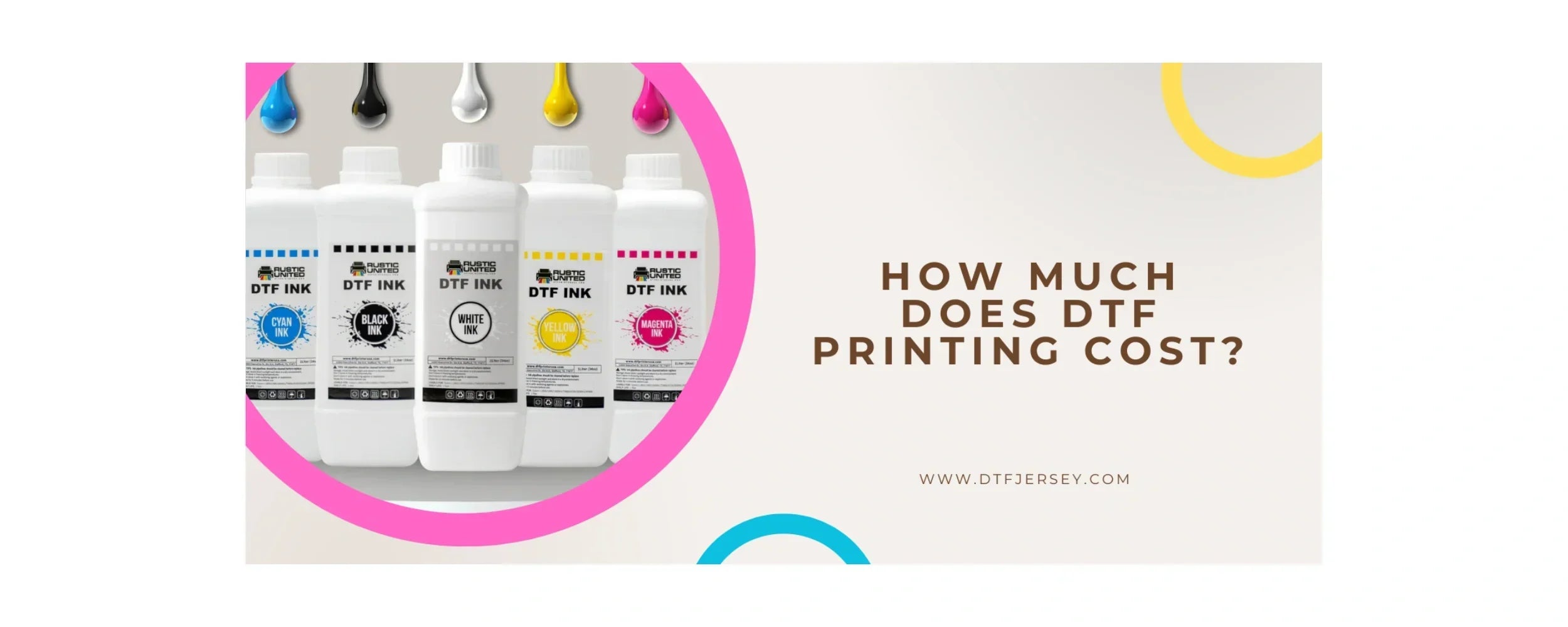Article: DTF Pressing Instructions: A Complete Step-by-Step Guide

DTF Pressing Instructions: A Complete Step-by-Step Guide
DTF printing is not just about crafting a successful print, knowing how to properly press your transfers is just as important as printing them. When you don’t have the right DTF pressing instructions, your prints can crack, peel, or fade quickly. In this step-by-step article, you will get to know about DTF pressing from all aspects.
Why Pressing Is a Crucial Step in DTF Transfers?
Pressing is where the real magic happens. After your design is printed and powdered, it is not ready to wear until you press it onto the fabric. The heat and pressure cause the adhesive powder to melt and bond with the material. If not done correctly, your print might lift off after a few washes or look dull.
That is why following the heat press instructions is key. Each step matters; temperature, time, and pressure must be just right. So before you press that first shirt, let’s make sure you are fully prepared.

Essential Tools and Materials for DTF Heat Pressing
To get started, you must have these tools, make sure your heat press instruction manual is nearby if you are using the machine for the first time:
- A high quality heat press machine
- Printed and powdered DTF transfers
- T-shirts or other fabric blanks
- Heat-resistant tape, not compulsory
- Teflon or parchment paper
- Lint roller
DTF Heat Press Settings: Temperature, Time, and Pressure
Getting your settings right can make or break your print. Here are the standard DTF heat press instructions you need to follow:
- Temperature should be 300°F to 320°F
- Time should be 15 to 20 seconds
- Pressure should be Medium to firm
These DTF transfer heat press instructions can change depending on your fabric type, transfer film, and press model, so always test a sample if you are unsure. Also, check your instruction manual to set the pressure correctly. A poor seal means weak adhesion.
Step-by-Step Instructions for Pressing DTF Transfers
These DTF press instructions are for a standard t-shirt, but they work for almost all garments:.
Step 0: Prepare your workspace
Before you begin pressing your DTF transfers, prepare your workspace. Start by cleaning your heat press to remove any debris or leftover residue that could affect the quality of your transfer.
Step 1: Pre-press the Garment
Place the shirt on the press and give it a 5 second pre-press at 300°F. This removes wrinkles and moisture for a smooth base. A dry, flat surface helps the transfer stick evenly.
Step 2: Place the DTF Transfer
Position your DTF transfer printed side up, film side down, on the garment. Use a ruler or eyeball it for center alignment. You can also use heat-resistant tape if you are working with slippery fabric.
Step 3: Cover and Press
Place a sheet of parchment or Teflon paper on top of the transfer. Close the press and apply medium to firm pressure for 15 to 20 seconds at around 310°F.
Step 4: Let It Cool or Peel Hot
Now comes the peeling part; this depends on the transfer type.
- If it is cold peel, wait until the film is completely cool before peeling.
- If it is hot peel, carefully peel immediately after pressing.
Step 5: Post-press for Better Durability
After peeling, place the Teflon paper back and press again for 5 to 10 seconds. This step improves washability and makes the print feel smoother. These final DTF pressing instructions help lock in the design for long-term wear.
Cold Peel vs. Hot Peel: Which Method Should You Use?
Some DTF gang sheets or films are designed to peel cold, while others are hot peel compatible. You can quickly compare:
Cold Peel: Wait 30 to 60 seconds before peeling. Results in sharper edges and better detail.
Hot Peel: Peel immediately. Faster workflow, slightly softer feel.
Always read the label on your transfer film or refer to the t-shirt press instructions from your supplier.

Common Mistakes to Avoid When Pressing DTF Transfers
Even one small mistake can ruin a shirt. There are some common issues you can avoid:
1. Wrong pressure:
If your print doesn’t stick, check your pressure first.
2. Incorrect temperature or time:
Too hot or too cold can affect adhesion.
3. Not pre-pressing:
This leads to moisture retention and poor bonding.
4. Peeling too early or late:
Only peel according to the film type.
5. Skipping post-pressing:
Skipping this can lead to fading after washes.

DTF Pressing Instructions for Different Fabrics
Each fabric reacts differently to heat and pressure. Below is how to handle common types:
Cotton:
Easy to press. Follow standard DTF heat press instructions.
Polyester:
Use lower temperature around 280 to 290°F to avoid scorch marks.
Blends:
Test a sample first. They vary in heat tolerance.
Nylon or stretch fabrics:
Special adhesive and lower temps may be required.
For each fabric, always start by consulting your heat press instructions and doing a test run before full production.
Tips for Long-Lasting and Vibrant DTF Prints
Want your prints to pop and last long? Follow these tips as they may not be in every heat press instruction manual:
1. Use high-quality transfer film and adhesive powder.
2. Avoid over-pressing, which can flatten your design.
3. Always post-press for better ink bonding.
4. Don’t fold or wash the garment immediately after pressing. Let it cure for at least 24 hours.
5. Wash inside out, cold water, and avoid harsh detergents.
How to Store Pressed DTF Garments Properly
Storing properly can make your prints look good for months. Do as the following:
- Let the shirt fully cool and cure for at least 24 hours.
- Store garments flat or on hangers, away from heat and moisture.
- Avoid stacking freshly pressed shirts to prevent ghosting or sticking.
- If storing long term, place parchment paper between prints.
In the end, mastering DTF pressing instructions doesn’t require a degree; it just needs patience, the right tools, and attention to detail. By following this guide, you can create vibrant, durable DTF designs that you will love to wear again and again. Hence, refer to these instructions as your go-to checklist for every press session.
You can also visit our page to learn more about how to take care of a printed shirt and keep your prints looking vibrant longer.

